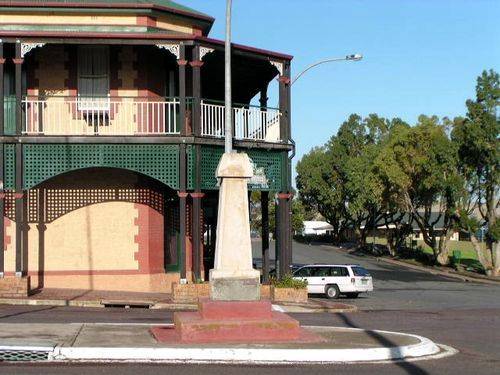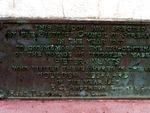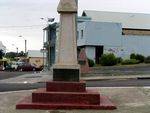
Pieter NuytsPrint Page 
The obelisk commemorates the tercentenary of Dutchman Pieter Nuyts` exploration of the coast. The history of European exploration of the Streaky Bay area starts with the Dutch sailors who accompanied Pieter Nuyts on his 1627 voyage across the Great Australian Bight.
The plaque was unveiled on the obelisk on the 7th October 1938.
Nuyts reached the South Australian coast near Streaky Bay before turning westward and heading to the Dutch East Indies. The monument also honours Stuart and Flinders.
On April 16, 1927, the District Council of Streaky Bay received a suggestion from the Royal Geographical Society of Australasia, S.A. branch, that a monument should be erected. Consideration of the proposal was deferred until May 21, when it was agreed that a memorial should be erected at the intersection of Alfred terrace and Bay road, to commemorate the voyage in 1627. It was then decided that a concrete or stone obelisk should be erected and carry a bronze tablet with a historical record. The structure was to act in a dual capacity — as a historical record and as a road beacon — commemorative and utilitarian.
Excerpt from Port Lincoln Times (SA) 4 June 1937.
On Friday the Chief Secretary (Sir George Ritchie) unveiled a tablet on an obelisk at the intersection of Bay Road and Alfred Terrace, in memory of Captain Peter Nuyts, who reached Streaky Bay in 1627, 150 years before Captain Cook discovered Botany Bay. There is no official record that he landed.
Chronicle (Adelaide) 13 October 1938.
Location
| Address: | Alfred Terrace & Bay Road, Streaky Bay, 5680 |
|---|---|
| State: | SA |
| Area: | AUS |
| GPS Coordinates: | Lat: -32.795958 Long: 134.211094 Note: GPS Coordinates are approximate. |
Details
| Monument Type: | Monument |
|---|---|
| Monument Theme: | People |
| Sub-Theme: | Exploration |
| Approx. Event Start Date: | 1627 |
| Approx. Event End Date: | 1627 |
Dedication
| Approx. Monument Dedication Date: | 1927 |
|---|
This Beacon Was Erected
By The District Council Of Streaky Bay
In The Year 1927
To Commemorate The Tri-Centenary
Of The Voyage Of Discovery Made By
Pieter Nuyts
Who Visited These Shores In The Ship
"Gulden Zeepard"
In The Year 1627.
































